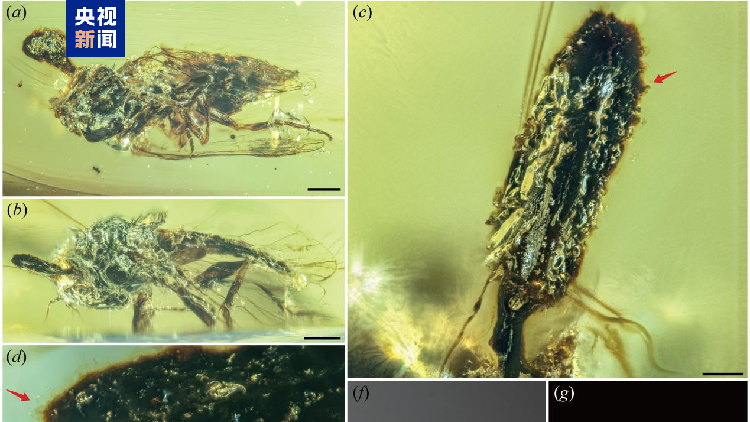Imagine finding a 100-million-year-old fossil! 🕰️ That’s exactly what a team of scientists led by China did! They discovered two new species of parasitic fungi preserved in amber. 🕸️🌿
What’s so special about these fungi?
Well, these parasitic fungi lived during the time of dinosaurs! 🦕 They were found trapped in golden amber from Myanmar, which is like nature’s time capsule. Amber is fossilized tree sap that can preserve tiny creatures and plants for millions of years.
Parasitic fungi? What’s that?
Parasitic fungi are types of fungi that live on or inside other organisms (like insects) and get their food from them. Kind of like how some plants wrap around trees! 🌳 These fungi belonged to a group called Ophiocordyceps (oh-fee-oh-cor-die-seps). Scientists have found it hard to study their fossils because fungi are soft and usually decay quickly.
Why is this discovery important?
Finding these fungi fossils helps scientists understand how fungi and insects evolved together over millions of years! 🦗➡️🕸️ The fossils were so well-preserved that researchers could compare them directly with fungi that exist today.
How old are these fungi?
Before this discovery, scientists thought Ophiocordyceps originated around 100 million years ago. But now, thanks to these fossils, they believe it started around 130 million years ago! That’s like adding 30 million years to its history! 🗿
Wang Bo, the lead researcher, said, “Our findings push back the origin of these fungi by about 30 million years!” 🕰️✨
Where was this research published?
The exciting findings were shared in a scientific journal called the Proceedings of the Royal Society B: Biological Sciences. 📘
Why should we care?
Discoveries like this help us learn more about the ancient world and how life on Earth has changed over time. Who knows what other secrets are waiting to be found in amber? 🧐✨
Science is awesome! 🚀🔬
Reference(s):
Chinese scientists discover 100-million-year-old parasitic fungus
cgtn.com




